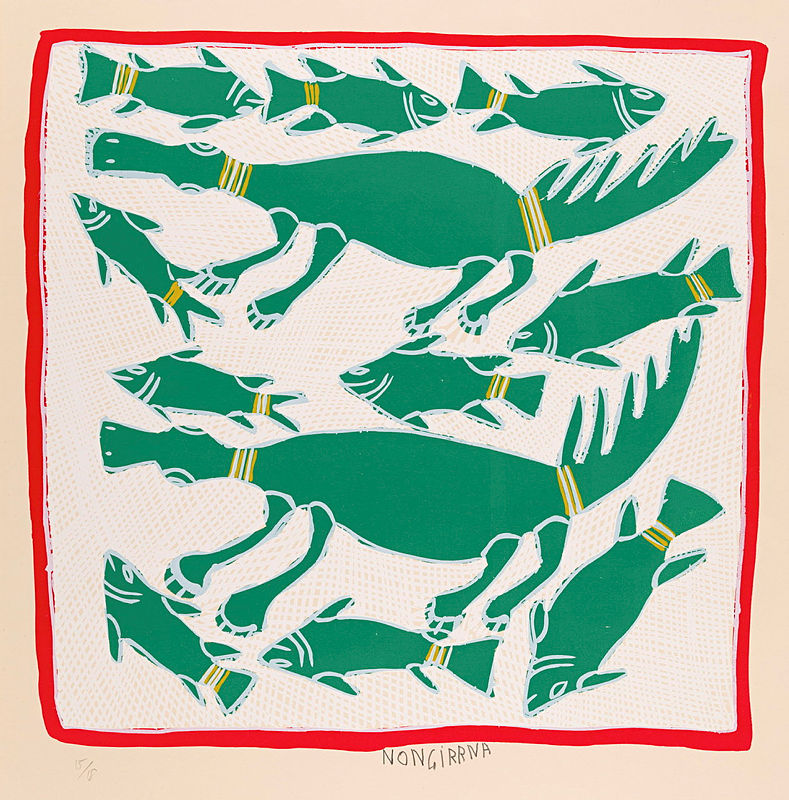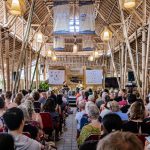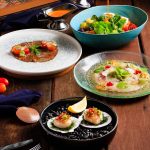This winter the Art Gallery of New South Wales will present Yolŋu power: the art of Yirrkala, a major exhibition that platforms one of Australia’s most internationally renowned arts communities and features more than 70 extraordinary Aboriginal artists connected to Yirrkala in the Northern Territory’s Arnhem Land.
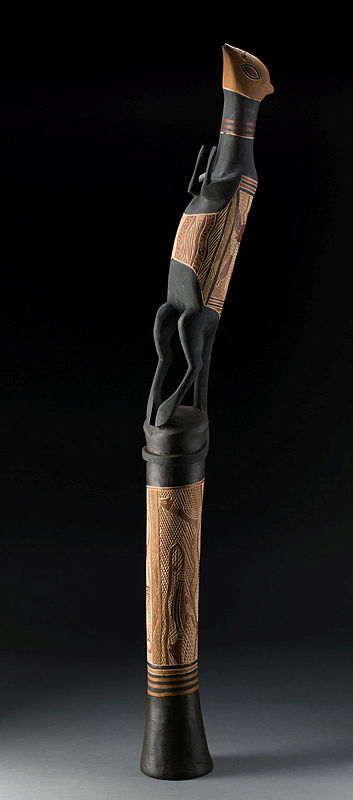
Bringing together more than 300 works created over the span of eight decades, the exhibition considers the significant moments in Yirrkala’s history when artists have consciously altered their practice, developed new styles or embraced new mediums. In covering multiple generations, the exhibition highlights familial connections and cultural continuation. It also contextualises the work of individual artists within the broader school of artists from Yirrkala, and surrounding Miwatj and Laynhapuy Country.
The exhibition is presented in partnership with the Aboriginal-owned art centre, Buku-Larrŋgay Mulka Centre located in Yirrkala. This art centre was established as an act of Yolŋu self-determination in the 1970s, in the midst of the land rights movement. Decades earlier, artists at Yirrkala were among the first Indigenous Australians to employ art as a political tool, most notably through the Yirrkala Bark Petitions of 1963, which were sent to the Australian Parliament to assert Yolŋu custodianship of Country.
Yolŋu people have painted sacred designs on the body and objects since time immemorial. Known as miny’tji these designs are not merely decorative, they are important patterns that denote the interconnection between Yolŋu people, law and Country. Through these visual languages, artists from Yirrkala have shared art as a means of cultural diplomacy – as a respectful assertion of power in its diverse forms, from sovereignty to influence, authority and control, to energy, strength and pride.
Yolŋu power considers the significant moments in Yirrkala’s history from the 1940s to the present when artists have consciously altered their practice, developed new styles or embraced new mediums. A unique exhibition design will bring bark paintings, drawings and prints on paper, and sculpture in both wood and metal together with immersive time-based art experiences. Yolŋu power will highlight familial connections and cultural continuation across multiple generations, while contextualising the work of individual artists within the broader school of artists from Yirrkala and surrounding Miwatj Country, now accaimed not only in Australia but, increasingly, internationally.
The Art Gallery has had a close relationship with Yirrkala since 1959, when the then deputy director, Tony Tuckson, with the support of benefactor Dr Stuart Scougall, worked with Mawalan Marika, Muŋgurrawuy Yunupiŋu and their families to acquire numerous works for the collection.
Art Gallery of New South Wales director Maud Page said: ‘I’m immensely proud that the Art Gallery has a long history with this community, collaborating with the Yirrkala art centre, Buku-Larrŋgay Mulka, to present Yirrkala drawings in 2013 and Noŋgirrŋa Marawili: from my heart and mind in 2018, and we are delighted to come together again to present our major winter exhibition, Yolŋu power: the art of Yirrkala.
‘Yolŋu power will be an innovative presentation of First Nations art that will take full advantage of the expansive Ainsworth Family Gallery in our Naala Badu building, which enables us to present art in dynamic and immersive ways— just as we have in recent exhibitions of the work of international artists Louise Bourgeois and Cao Fei.’
Yolŋu power: the art of Yirrkala spotlights Yirrkala artists spanning multiple generations and art forms including bark paintings, drawings, prints, and sculpture in both wood and metal, alongside video works and immersive digital installations. The exhibition comprises the Art Gallery’s collection of Yirrkala art, plus significant loans from Buku-Larrŋgay Mulka and other major Australian institutions and private collectors.

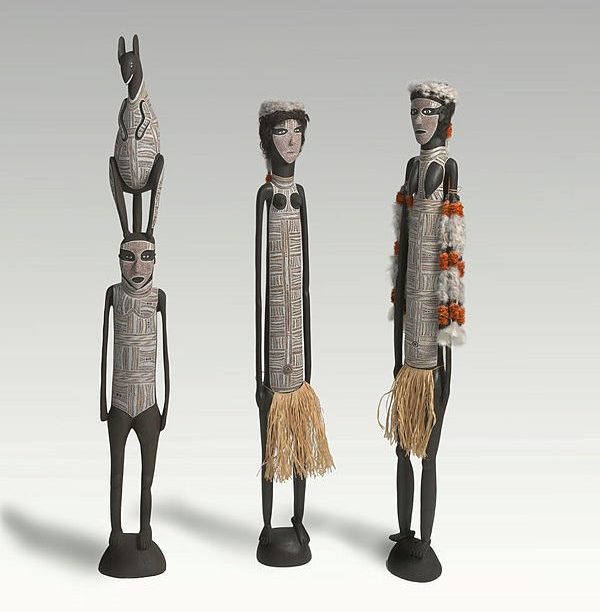
Exhibition curator and Art Gallery of New South Wales head of First Nations, Cara Pinchbeck said: ‘Yolŋu power explores the distinct shifts in practice instigated by artists as a means of asserting power through art over time. This power takes diverse forms, from the power inherent in the sacred designs of miny’tji and the cultural inheritance of artists, to the transformation of natural and reclaimed materials into exceptional artworks and the sentience of Country as it is enlivened by seasonal change.’
The exhibition highlights important bodies of work from Yirrkala’s art-making history, including a significant series of bark paintings to early examples of stylistic shifts depicted in a series of 1947 crayon drawings and in more recent years, the innovative use of reclaimed materials and metal led by senior artist Gunybi Ganambarr.
The exhibition also demonstrates how Yolŋu artists have used art for politics and petition, as seen in the works from the 1998 Saltwater Collection that document Indigenous sea rights, and Madarrpa Elder Djambawa Marawili’s push to produce a new aesthetic that allowed the next generation of artists to explore new ways of working.

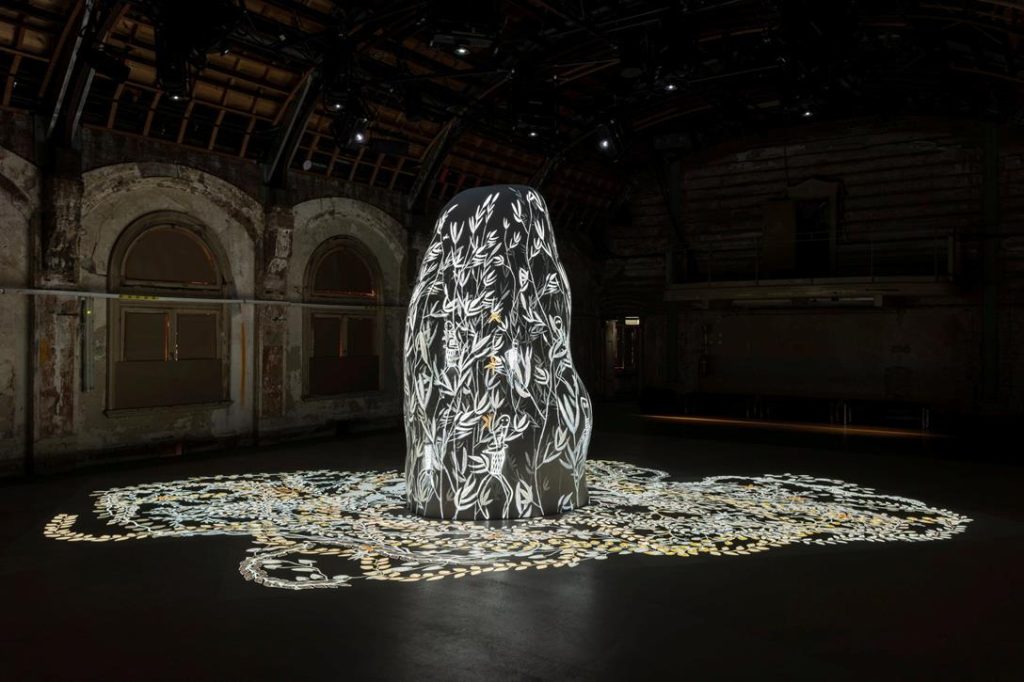
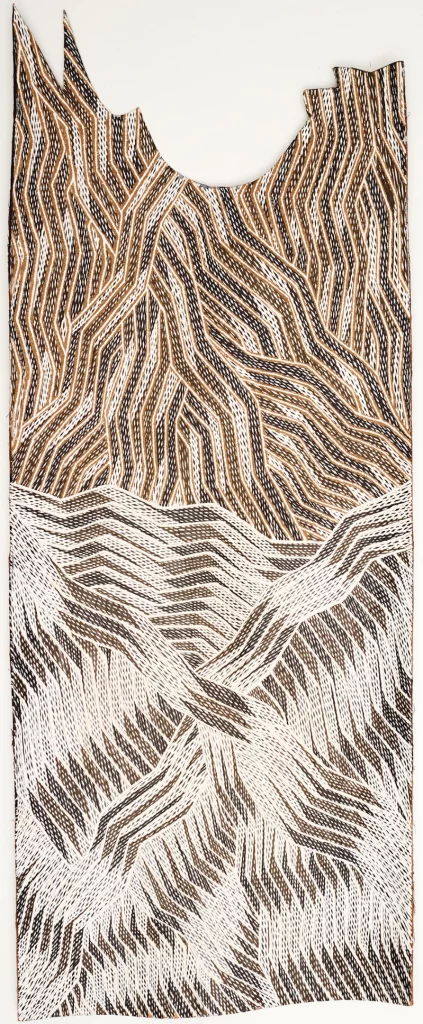
A display of more than 80 prints on paper made predominately by female artists working in the Yirrkala Print Space since the mid 1990s, foregrounds the work of the senior women such as Nyapanyapa Yunupiŋu whose broader practice evolved from printmaking to explore unique applications of colour, materiality and freedom of expression.
The collective of artists and digital producers from Yirrkala known as The Mulka Project will present two major installations as part of Yolŋu power. The Mulka Project is a digital production studio and archiving centre within Buku-Larrŋgay Mulka that also supports the production of multimedia artworks.
A major exhibition highlight will be the Sydney premiere of an immersive experience created by The Mulka Project, its creative director, Ishmael Marika, and his late great-grandmother, Ms M Wirrpanda. Rarrirarri 2023 animates the form of a termite mound with a soundscape of singing and the sounds of Yolŋu Country.
Coinciding with the opening of Yolŋu power, The Mulka Project will also take over the Art Gallery’s Nelson Packer Tank with a new multimedia installation.
The exhibition is accompanied by a comprehensive publication that offers a range of perspectives on the art of Yirrkala. Contributors include Madarrpa Elder Djambawa Marawili in conversation with Kade McDonald; exhibition curator and the Art Gallery’s head of First Nations, Cara Pinchbeck; and Buku-Larrŋgay Mulka coordinator, Will Stubbs.
Yolŋu power: the art of Yirrkala will be on display at the Art Gallery of NSW, in the Ainsworth Family Gallery in Naala Badu from 21 June to 6 October 2025.
On Gadigal Country
Art Gallery of New South Wales
Art Gallery Road, The Domain
Sydney NSW 2000 Australia




